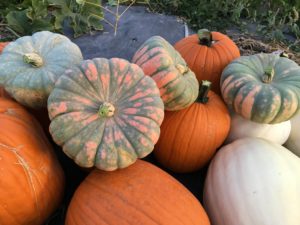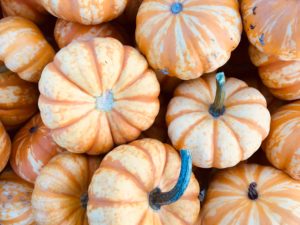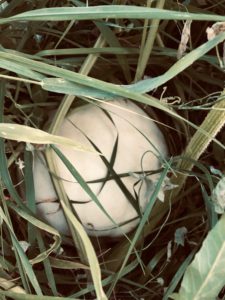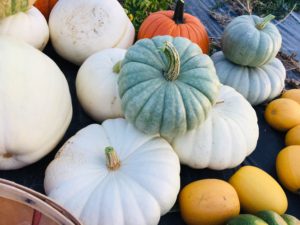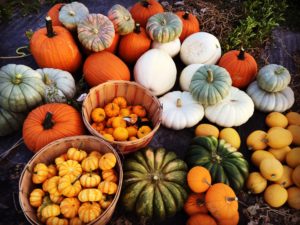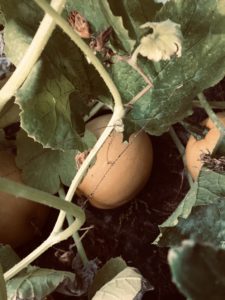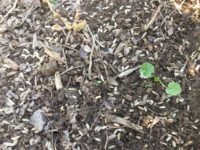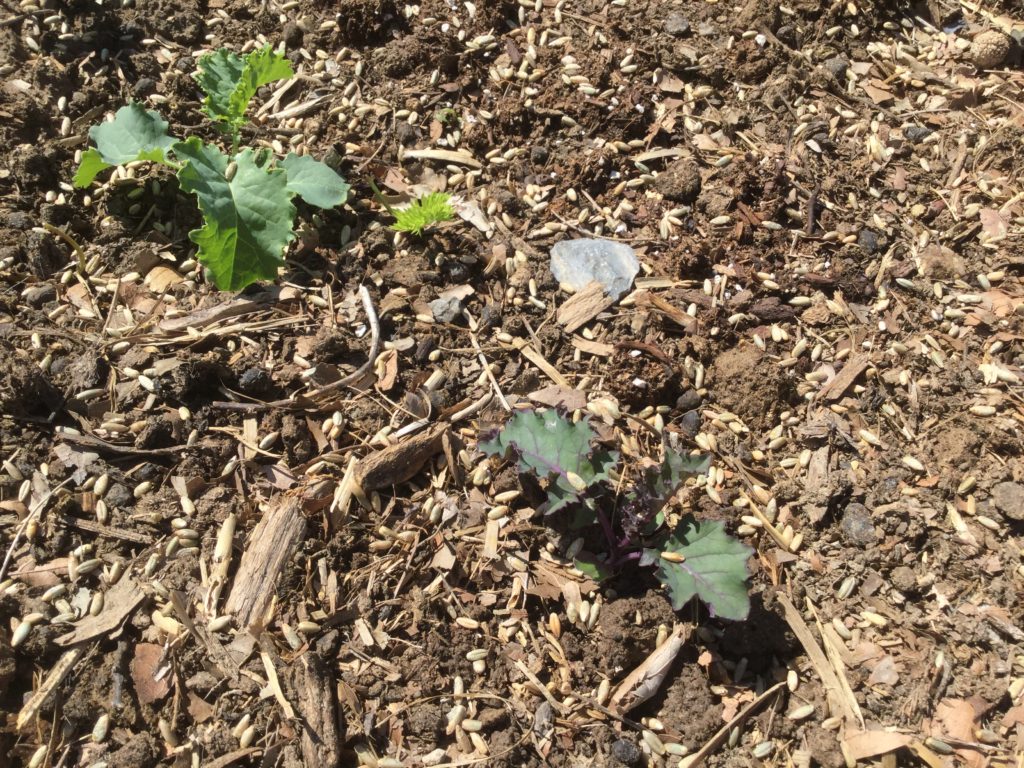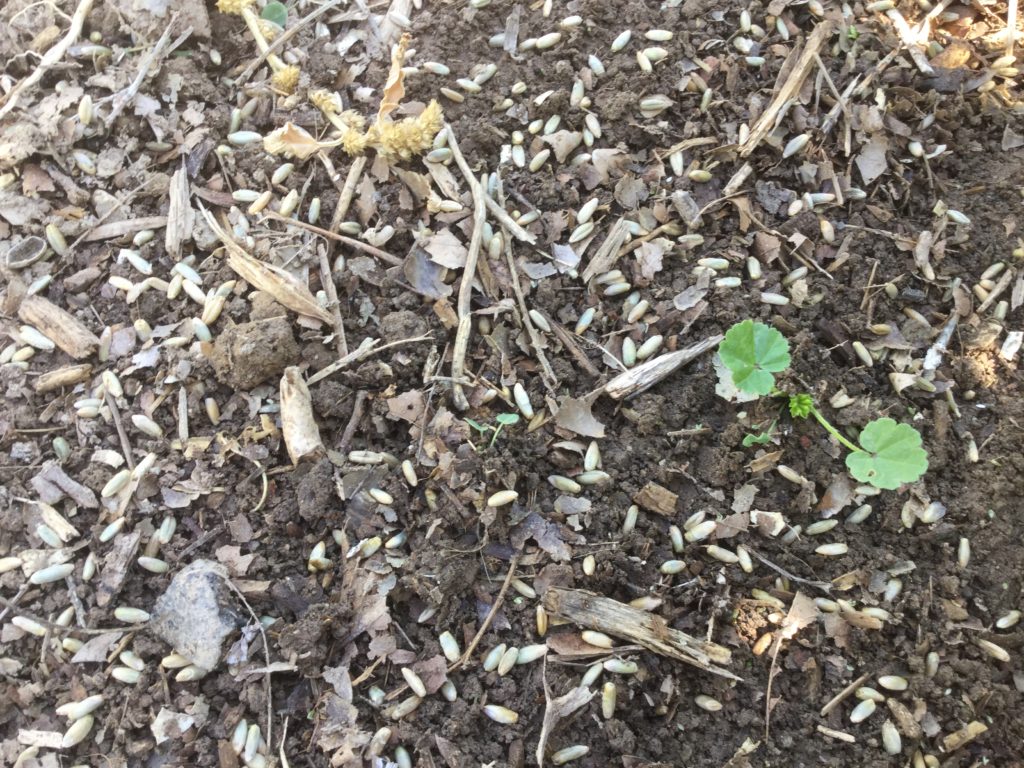There are a couple of major hurdles we have when it comes to our Farming #realfarm in Eagle Mountain. We are located in what is classified as the high desert. The main native plants are sage brush, rabbit brush, and juniper trees. We have to constantly fight water and soil fertility.
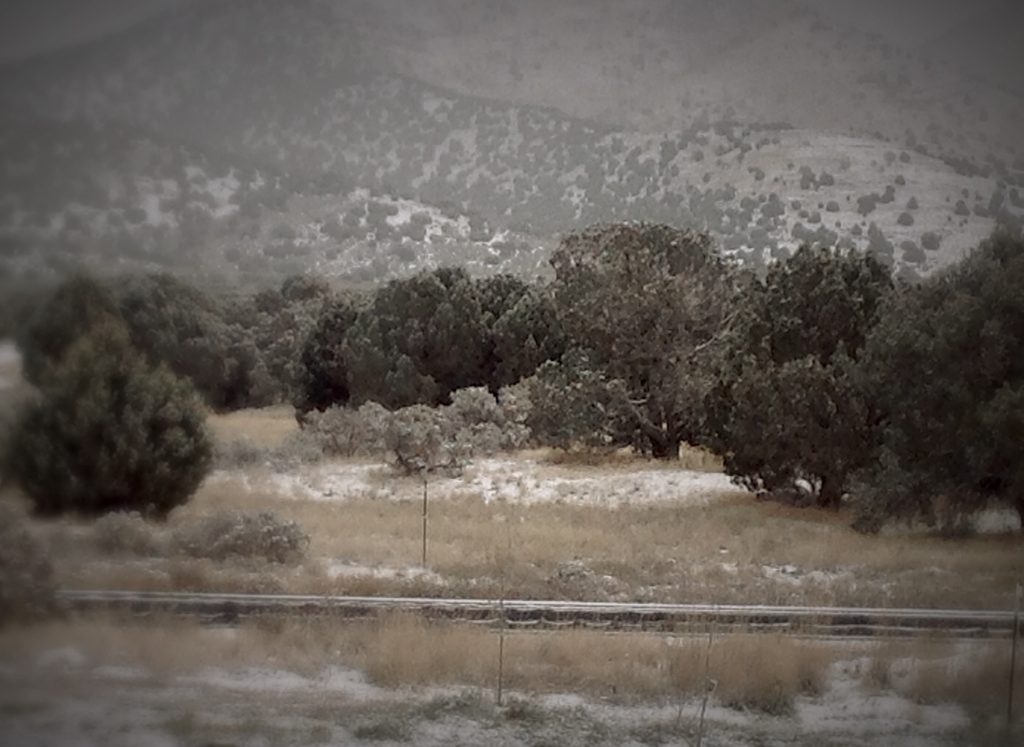
The vistas and views are breath taking, but trying to grow no native plants can be an issue. The valley at one point was one of the largest producers of grain for the Lehi Roller Mills. Farming can be done, but it does take some work and soil prep.
We recently started going to the farmers market in Eagle Mountain. And we plan on doing it again next year, but want to increase our produce and product offering. To accomplish this, we cleared almost another acre of our property to get ready to increase our production next year.
So we started the task of expanding our growing area as well as increasing soil fertility. In the middle of it, we had an equipment issue. Big Blue our trusty tractor had a tire issue. Basically the rim on one of the big tires rusted through. I was able to weld the rim, but now the tire will not take a seal. There are a few options we have to get it fixed, but we also would like to buy different equipment. So the repair is on hold while we figure out if we want to pay for repairing big blue, or buy new equipment. Big blue is after all is almost as old as I am, he was born in 1972. (Side note, I think we will just buy a tube for this tire and use it instead of worrying about the seal.)
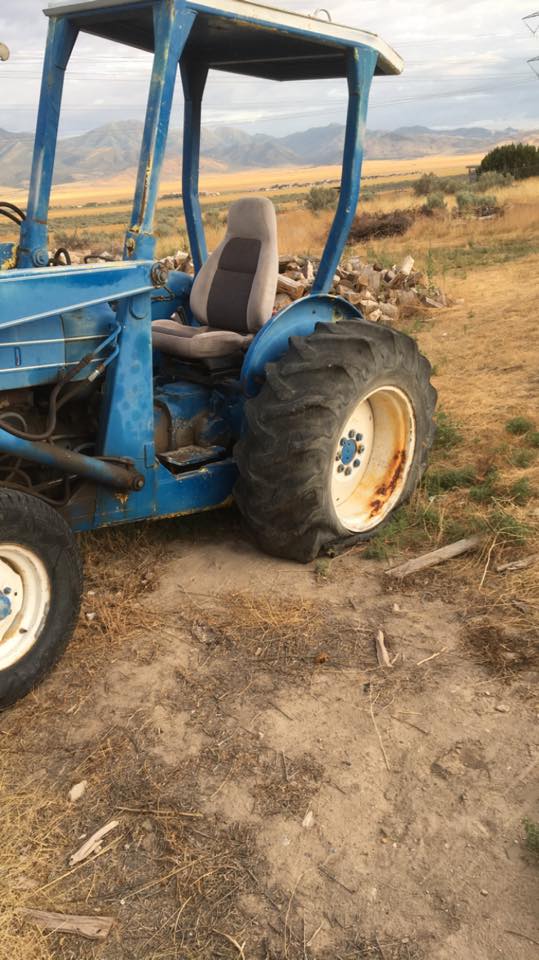
So we now need a different way to move manure from our neighbors property to ours. We would run big blue between our property and theirs in the past. That was an option that was not available right now. We also need to get the manure and other things to help with soil fertility before the snow falls.
So, we rented a dump trailer (another one of the things we would like to purchase), hooked it up to the van and then started the process of loading it by hand and then dumping it in an area so we could use it to work the soil for the expansion for next year.
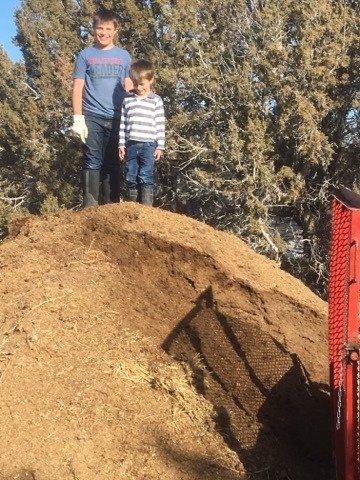
So I loaded the farm boys up in the van, hooked up the dump trailer and went over to the neighbors to move as much manure as possible.
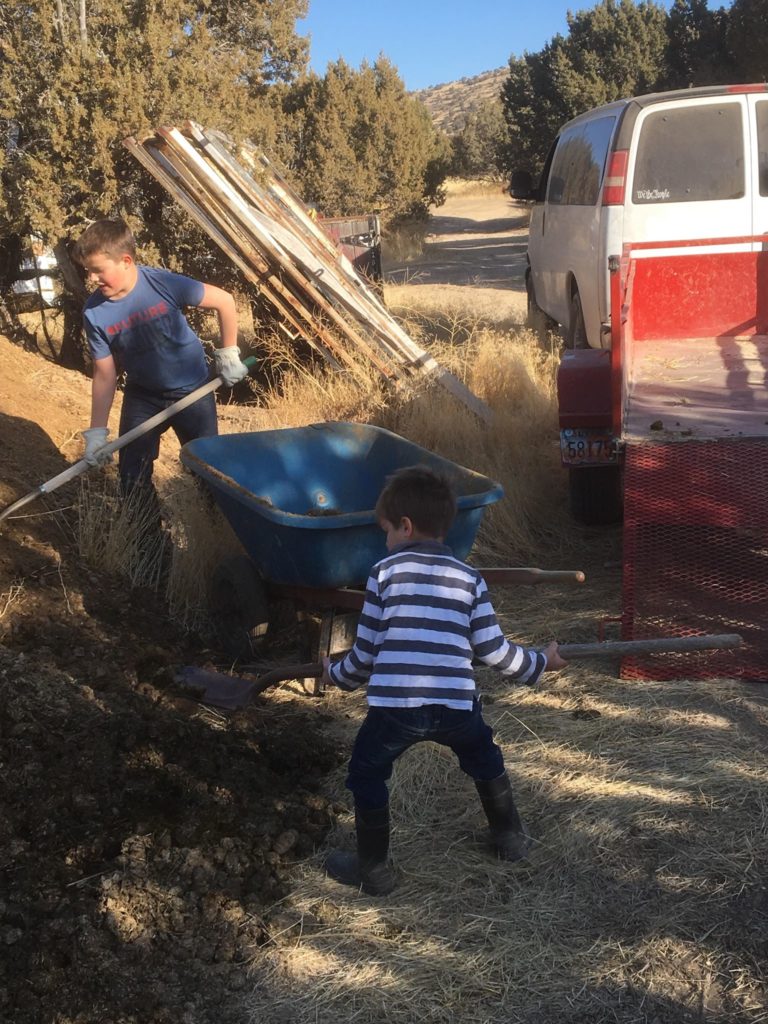
We then spent a good chunk of the day loading the dump trailer, pulling it back to the farm and dumping it. We were able to get 4 loads of manure. One of our daughters helps the neighbor by mucking out their horse stalls every day. So I left the trailer there and she filled it during her regular mucking activities. We were able to get an additional 2 loads of manure using this method as well.
We will post later to let you know what exactly we are doing with 18 Cubic Yards of horse manure as we try to increase soil fertility and prepare for next years Farmers Market.
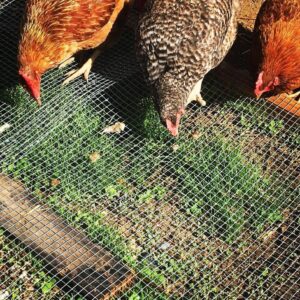
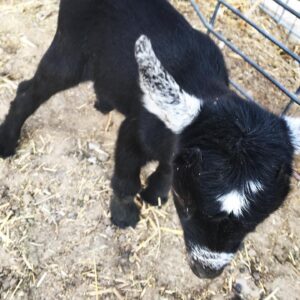
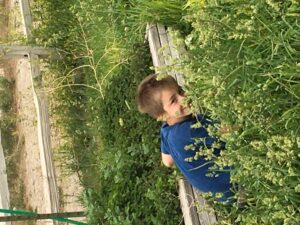
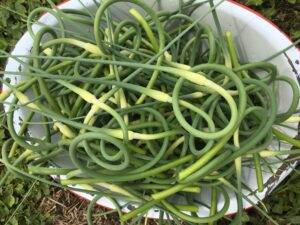
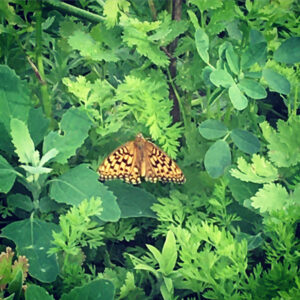
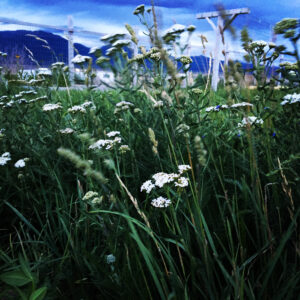
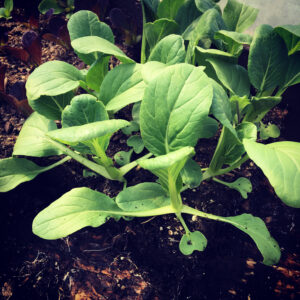
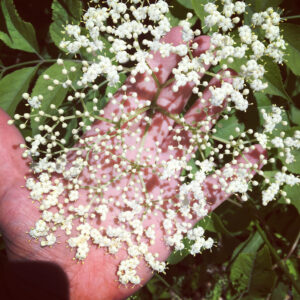
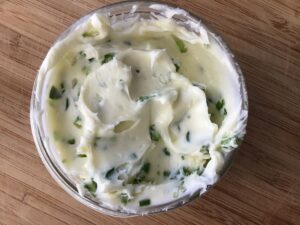
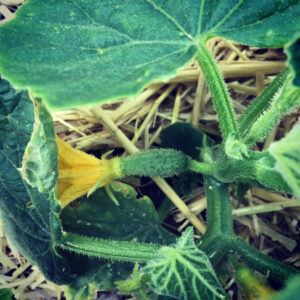

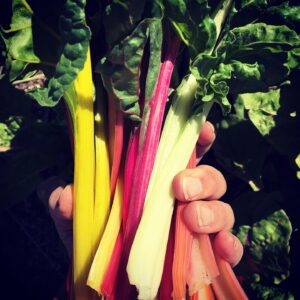
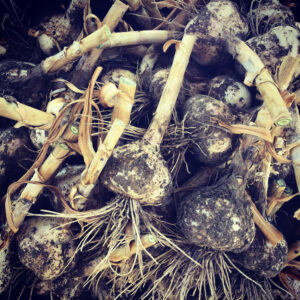
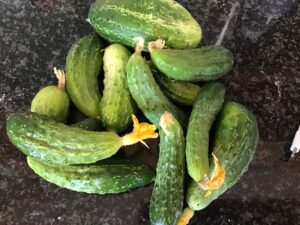
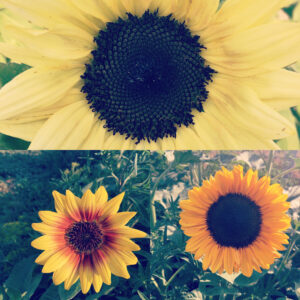
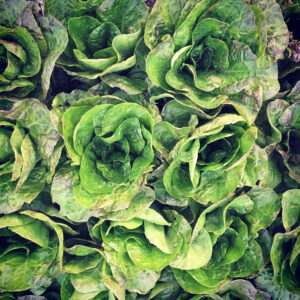
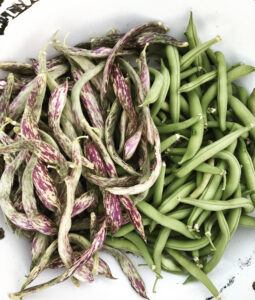
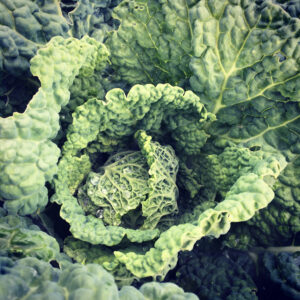
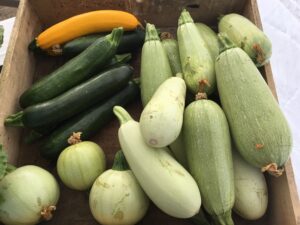
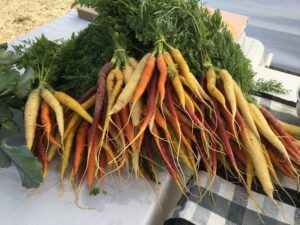
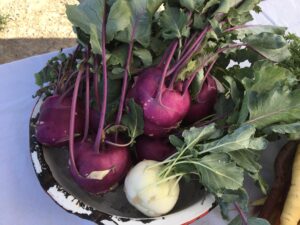
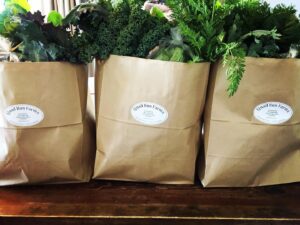
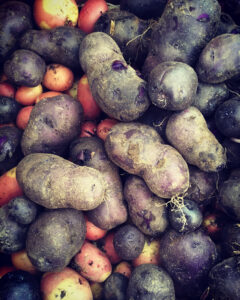


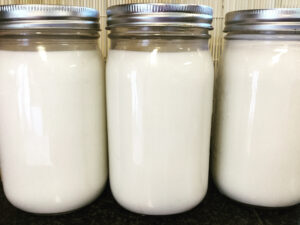
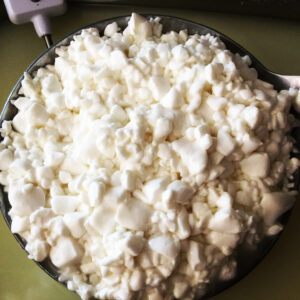
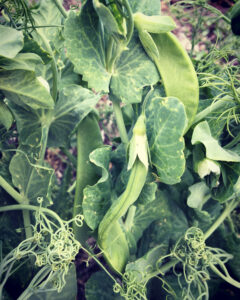
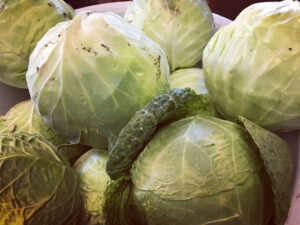
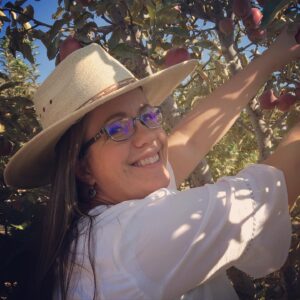
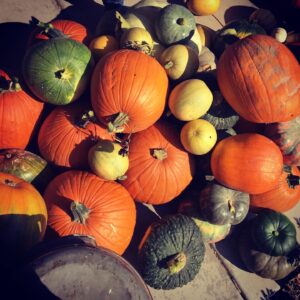
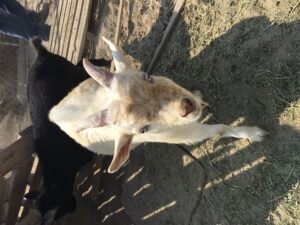
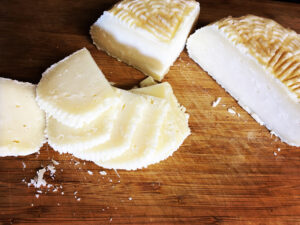 Pep
Pep
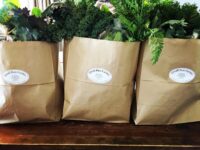
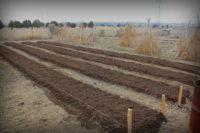
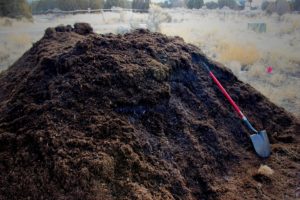
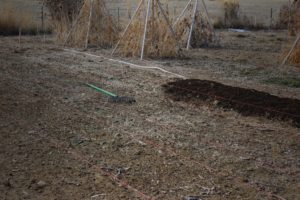 Last Fall we staked out the new garden. Previous it had been a big pumpkin patch, but we needed to move it because of squash bug issue and I wanted my new market beds closer to the established garden area. The pumpkins will go in the new, raw area, they are a good plant to break in a new place. We made each bed 30″ wide and 50′ long.
Last Fall we staked out the new garden. Previous it had been a big pumpkin patch, but we needed to move it because of squash bug issue and I wanted my new market beds closer to the established garden area. The pumpkins will go in the new, raw area, they are a good plant to break in a new place. We made each bed 30″ wide and 50′ long.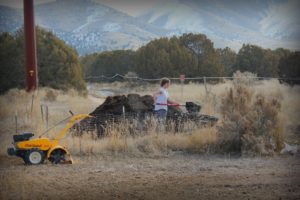 Not wanting to disturb the soil already there and not wanting to churn up weed seeds we are laying six inches of compost right on top of the soil and not mixing it in. Well made compost can be planted directly in, it won’t be too hot. The isles will be planted with mini clover, that will help keep the weeds and dust down and when it is mowed we will rake the clippings right into the garden beds, and as the plants grow we will add mulch and cover crops.
Not wanting to disturb the soil already there and not wanting to churn up weed seeds we are laying six inches of compost right on top of the soil and not mixing it in. Well made compost can be planted directly in, it won’t be too hot. The isles will be planted with mini clover, that will help keep the weeds and dust down and when it is mowed we will rake the clippings right into the garden beds, and as the plants grow we will add mulch and cover crops.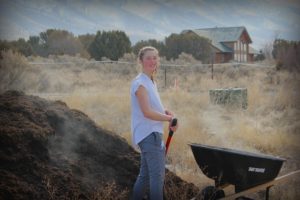 I love this picture, it shows the steaming compost both in the pile and in the wheelbarrow. This shows how well the microbe activity is, good healthy microbes mean good healthy soil. It is also nice on a cool morning to be able to warm up at the pile!
I love this picture, it shows the steaming compost both in the pile and in the wheelbarrow. This shows how well the microbe activity is, good healthy microbes mean good healthy soil. It is also nice on a cool morning to be able to warm up at the pile!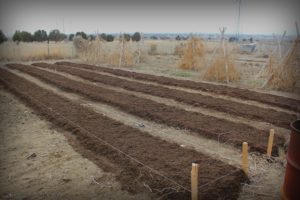
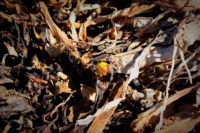
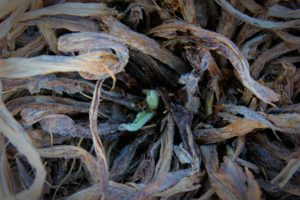 For a lot of people crocuses, daffodils, blossoms, tulips are the first signs of spring.
For a lot of people crocuses, daffodils, blossoms, tulips are the first signs of spring.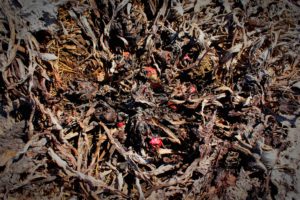 As soon as I can I am sticking my fingers in the dirt looking for two things:
As soon as I can I am sticking my fingers in the dirt looking for two things: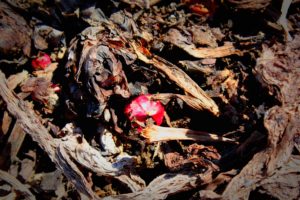 And look what I found.
And look what I found.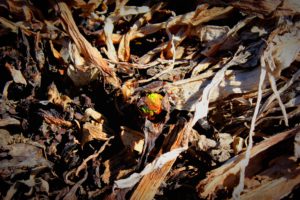
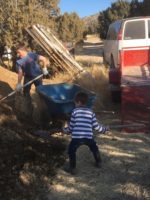




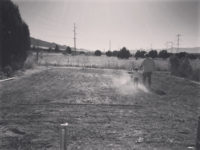
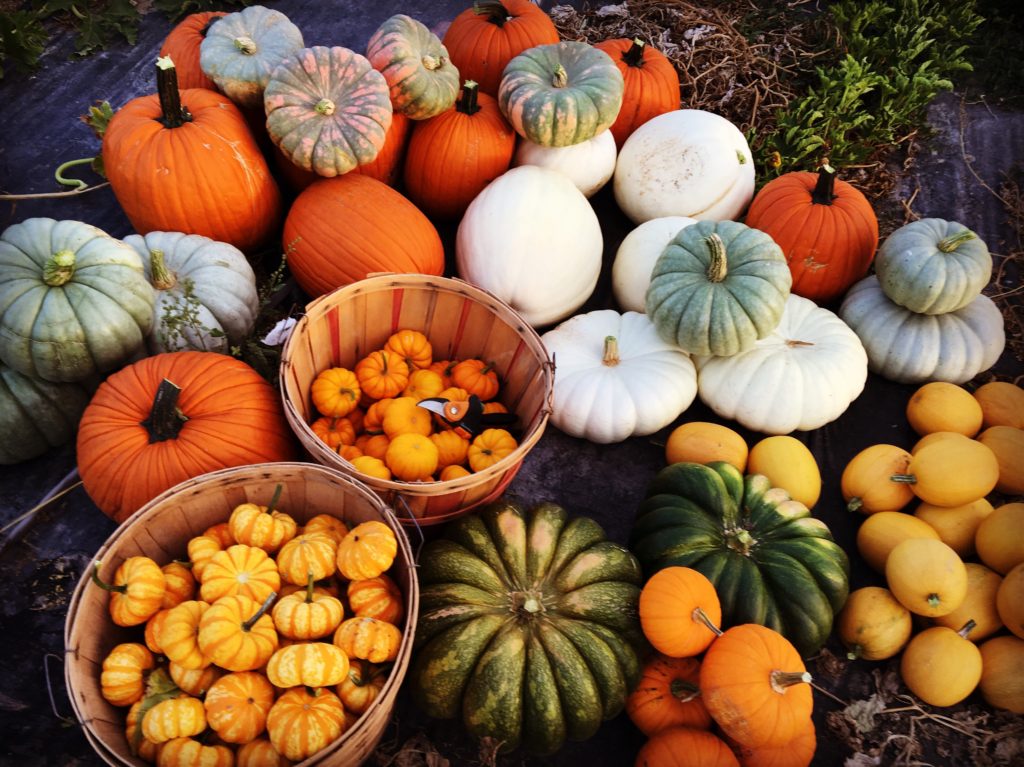
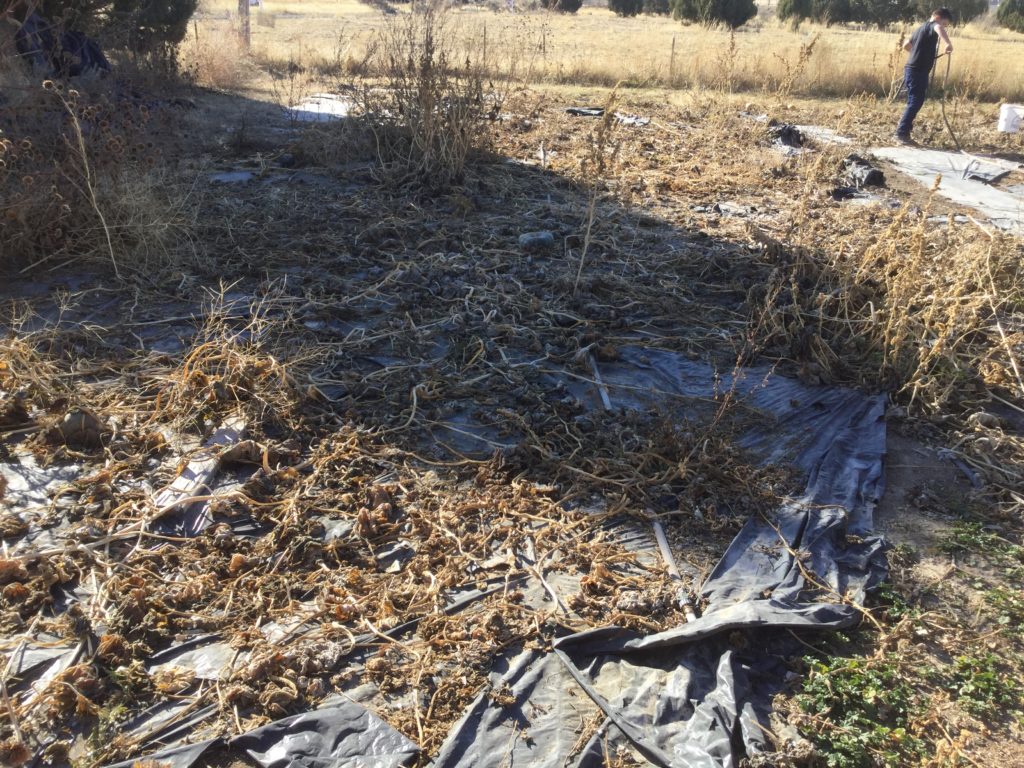 Our preparations for next season started this Saturday with a massive clean up. Squash bugs will hibernate in old plant debris, the spent vines, leaves and straw left on the garden. This is problematic for me as a “compost in place, no-till, leave nature to do its job” kind of girl. However the squash bugs had gotten so bad, it was time to re-think this philosophy a bit. We needed to pull up as many of the old vines as possible and dispose of them in a way that killed the over wintering bugs. We also needed to clean up the old plastic we used as a mulch for weeds.
Our preparations for next season started this Saturday with a massive clean up. Squash bugs will hibernate in old plant debris, the spent vines, leaves and straw left on the garden. This is problematic for me as a “compost in place, no-till, leave nature to do its job” kind of girl. However the squash bugs had gotten so bad, it was time to re-think this philosophy a bit. We needed to pull up as many of the old vines as possible and dispose of them in a way that killed the over wintering bugs. We also needed to clean up the old plastic we used as a mulch for weeds.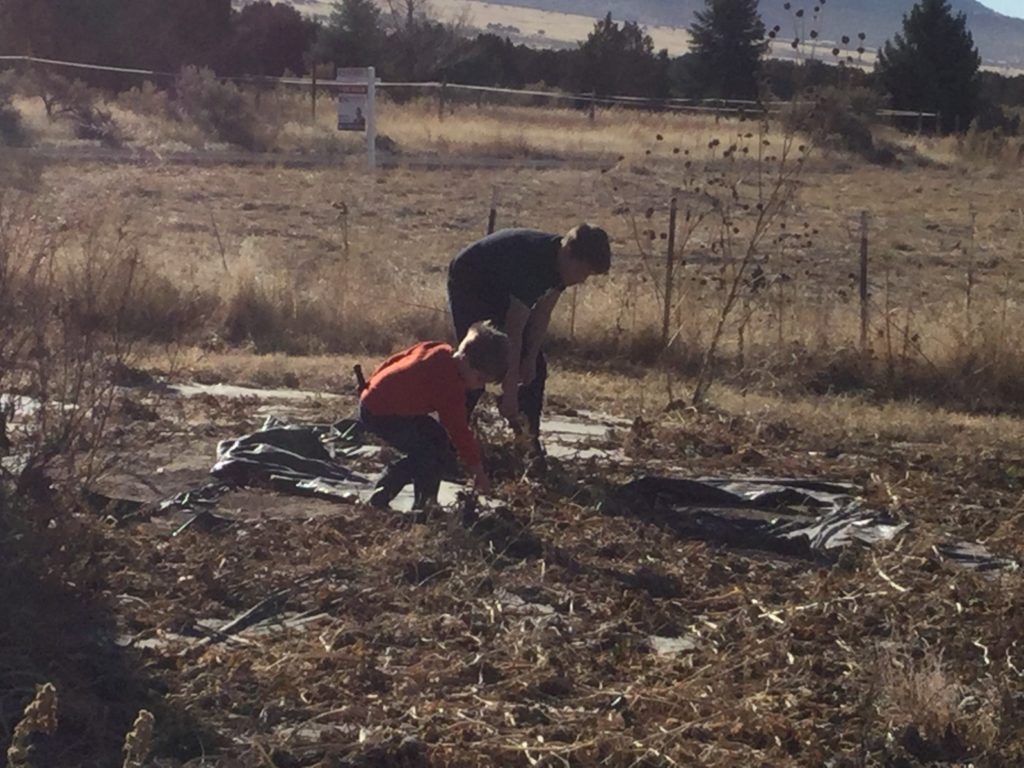
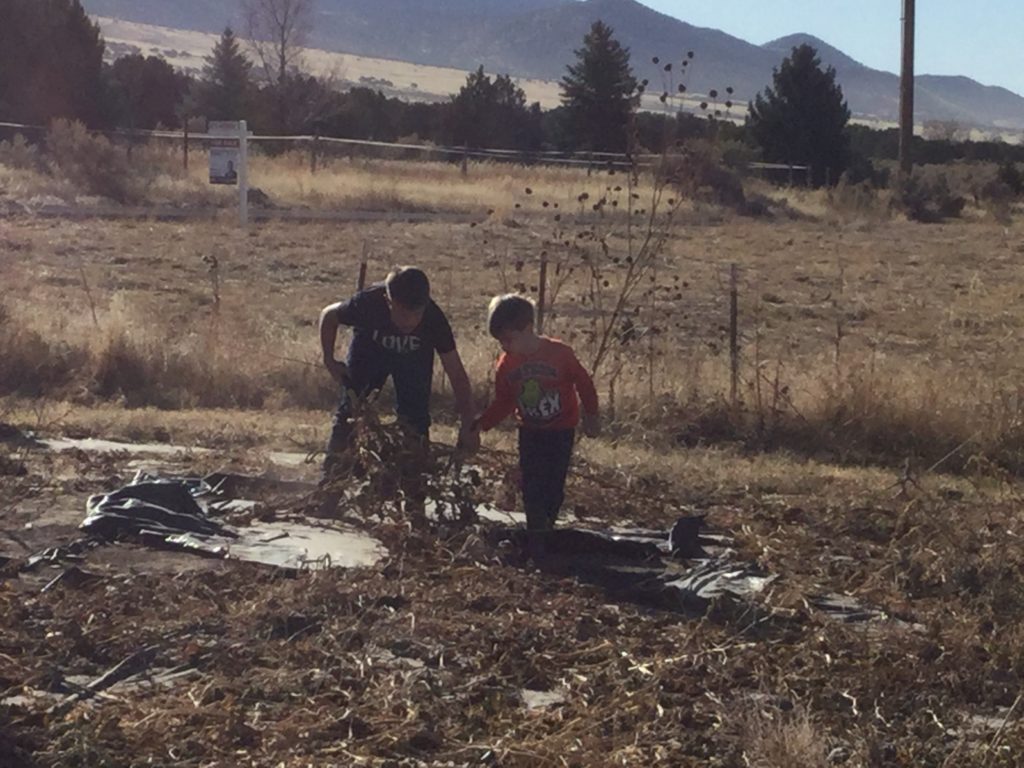
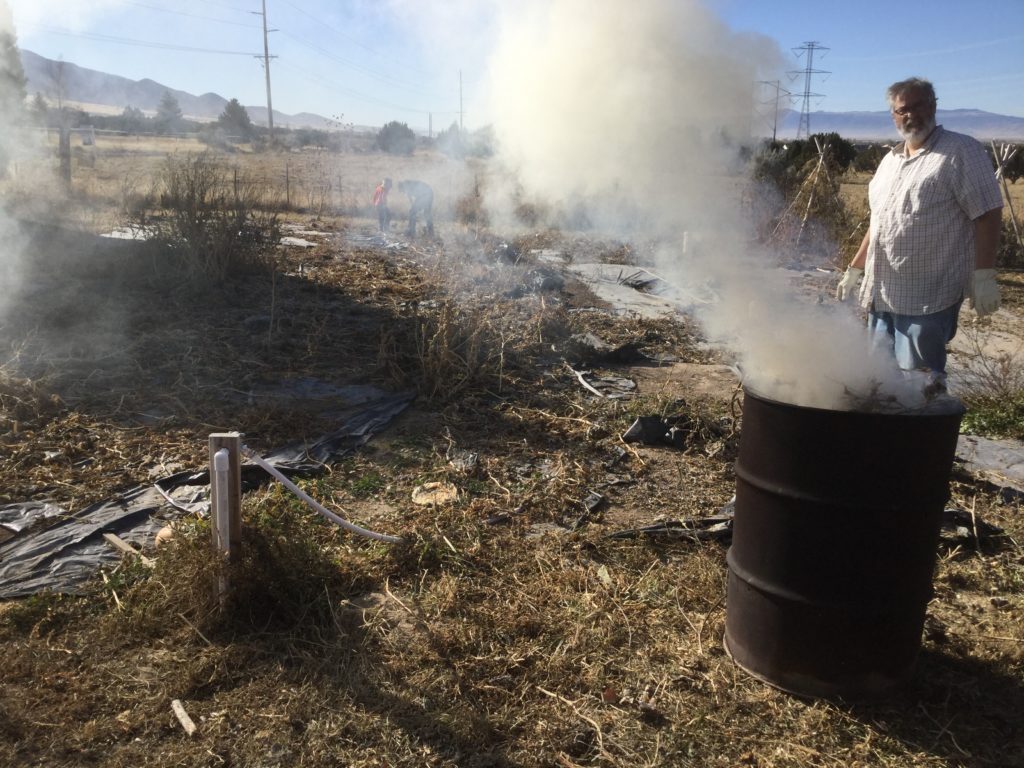 Instead of composting or feeding them to animals all the vines were burned. There were too many vines to send out with the trash, burning and then mixing the ashes in with the soil make me feel a little better about things.
Instead of composting or feeding them to animals all the vines were burned. There were too many vines to send out with the trash, burning and then mixing the ashes in with the soil make me feel a little better about things.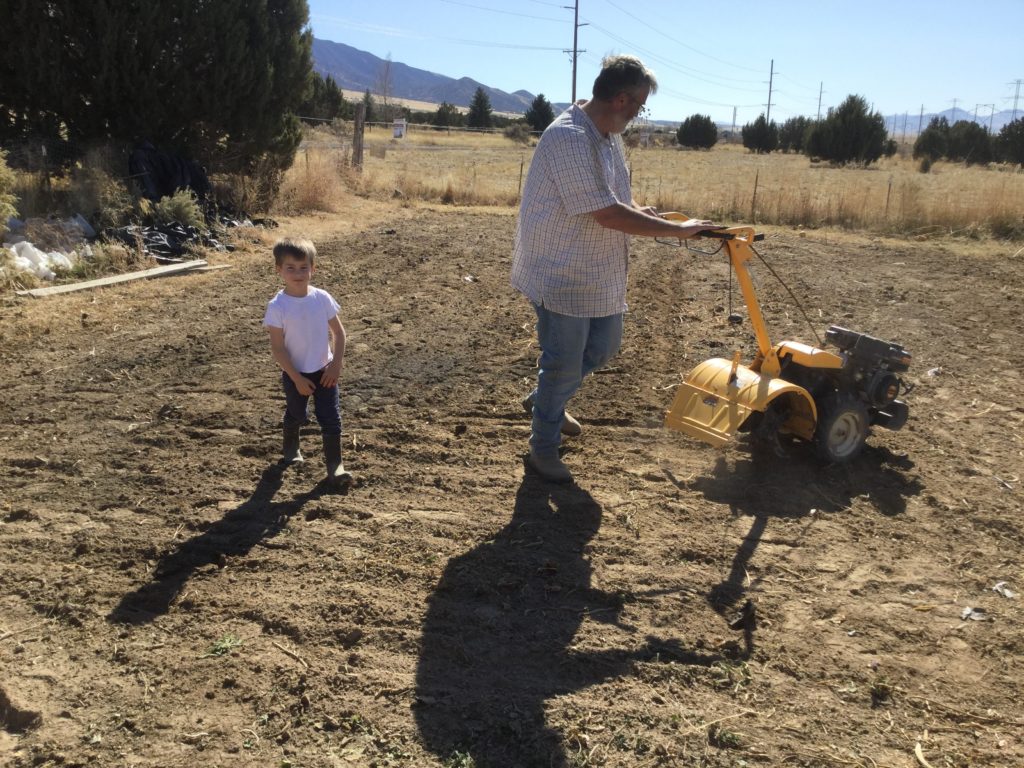 Another thing that helps combat the hibernating bugs is a light till. I don’t loving tilling, in my research the soil does better when left to do what is does best, but I’ve also learned that a very light till can have some benefits and little of the draw backs. So Mike and the boys gave the whole patch a little fluffing, this brings the bugs up and exposes them to the elements and kills them.
Another thing that helps combat the hibernating bugs is a light till. I don’t loving tilling, in my research the soil does better when left to do what is does best, but I’ve also learned that a very light till can have some benefits and little of the draw backs. So Mike and the boys gave the whole patch a little fluffing, this brings the bugs up and exposes them to the elements and kills them.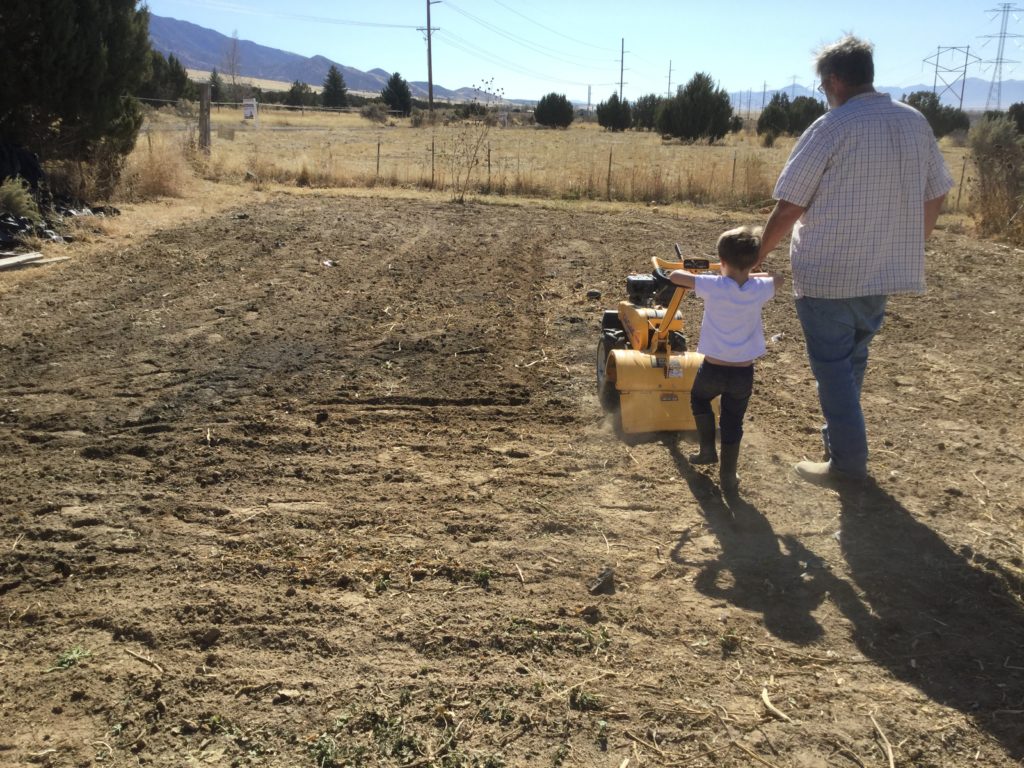
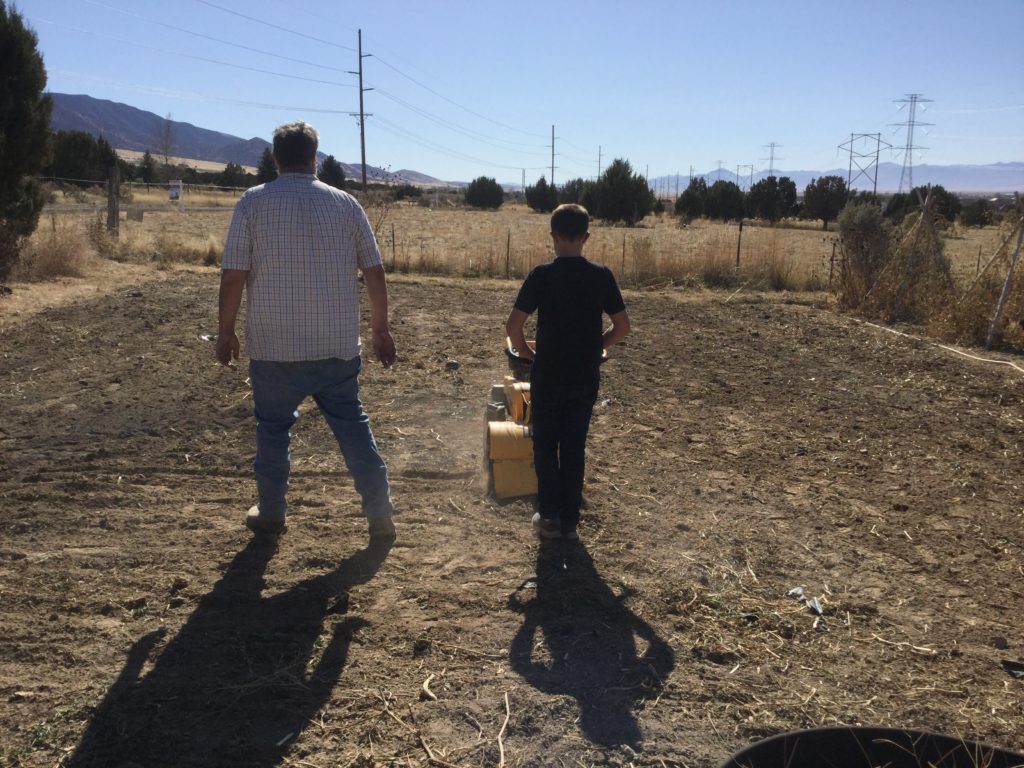 And lastly, the pumpkin patch will be moved. Rotation is very key and I am embarrassed to admit, I have never rotated pumpkins off this patch. This has always been a family garden so I didn’t manage it as carefully as I ought to have, but now that its a market garden rotation must be done with much thought and exactness. It is critical I get pumpkins off this bit of ground. The Pumpkin patch will be relocated and doubled in size to a new area that was cleared and prepared this summer. The old pumpkin patch will have new market beds with some classics like peas, beans and carrots with a colorful twist, which I love.
And lastly, the pumpkin patch will be moved. Rotation is very key and I am embarrassed to admit, I have never rotated pumpkins off this patch. This has always been a family garden so I didn’t manage it as carefully as I ought to have, but now that its a market garden rotation must be done with much thought and exactness. It is critical I get pumpkins off this bit of ground. The Pumpkin patch will be relocated and doubled in size to a new area that was cleared and prepared this summer. The old pumpkin patch will have new market beds with some classics like peas, beans and carrots with a colorful twist, which I love.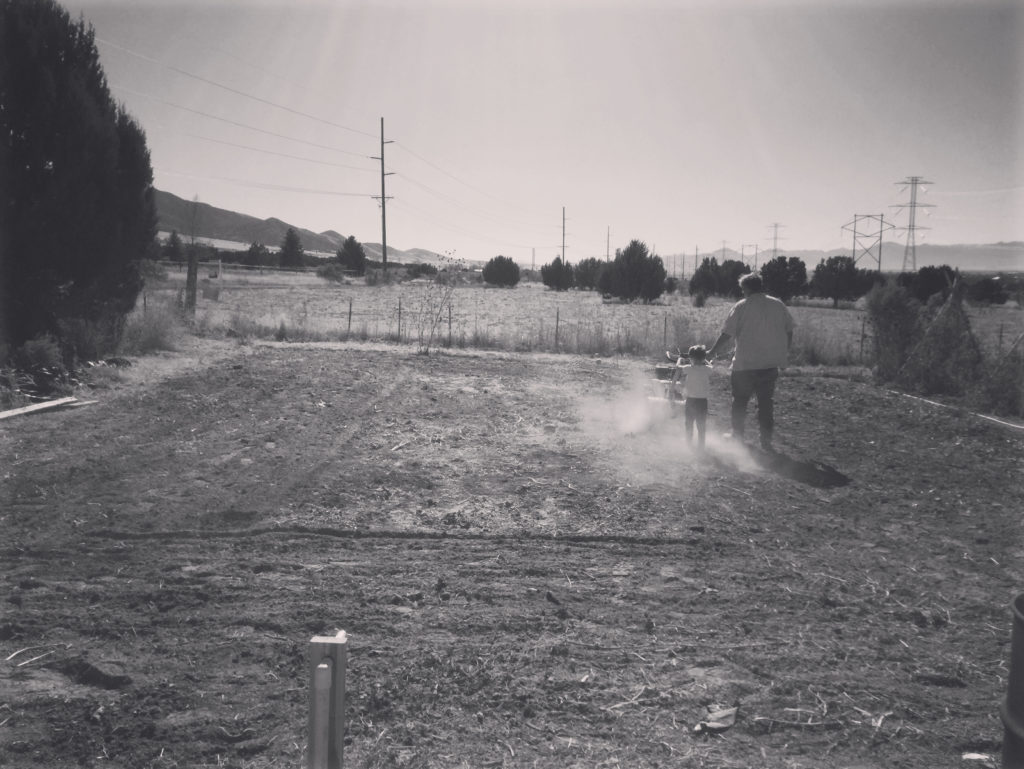
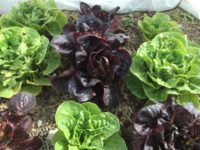
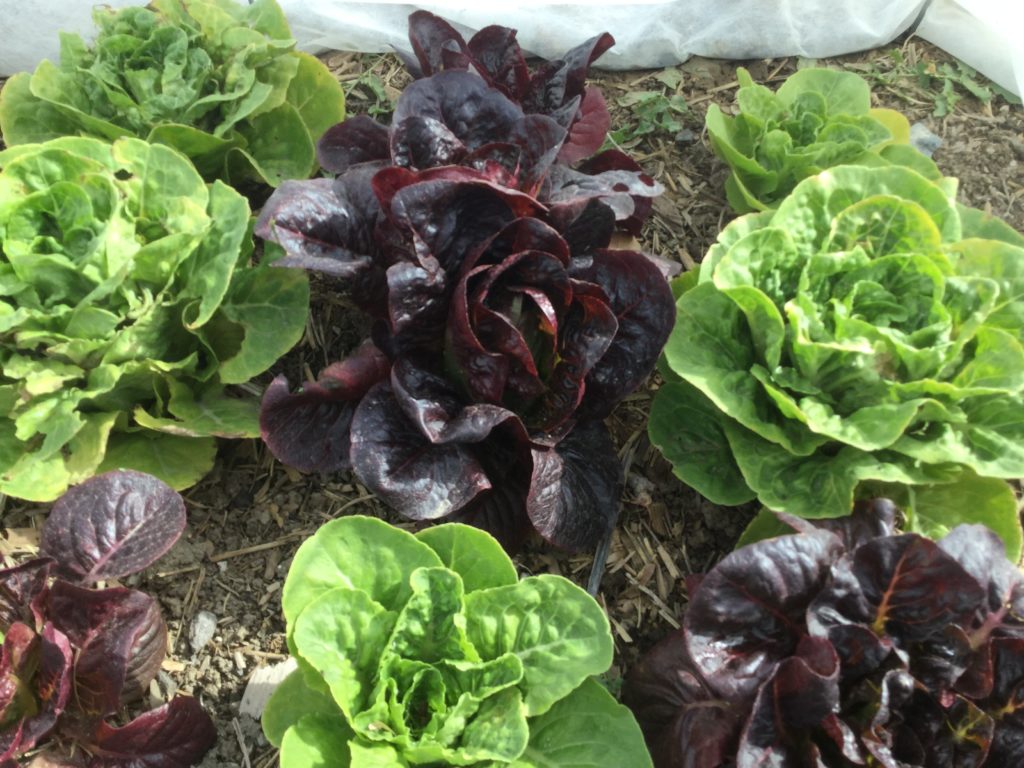 Late this season, about the end of August I decided to experiment with a late planting of lettuce. In the past I have kept my lettuce growing to the spring then quit when it got hot and the lettuce went bitter and bolted. If you live in a place where the summers get hot and you want lettuce throughout the summer you must do close succession planting. I just never bothered. I was only planting a garden for my family, but my first summer as a market garden had me thinking a little differently about lettuce.
Late this season, about the end of August I decided to experiment with a late planting of lettuce. In the past I have kept my lettuce growing to the spring then quit when it got hot and the lettuce went bitter and bolted. If you live in a place where the summers get hot and you want lettuce throughout the summer you must do close succession planting. I just never bothered. I was only planting a garden for my family, but my first summer as a market garden had me thinking a little differently about lettuce.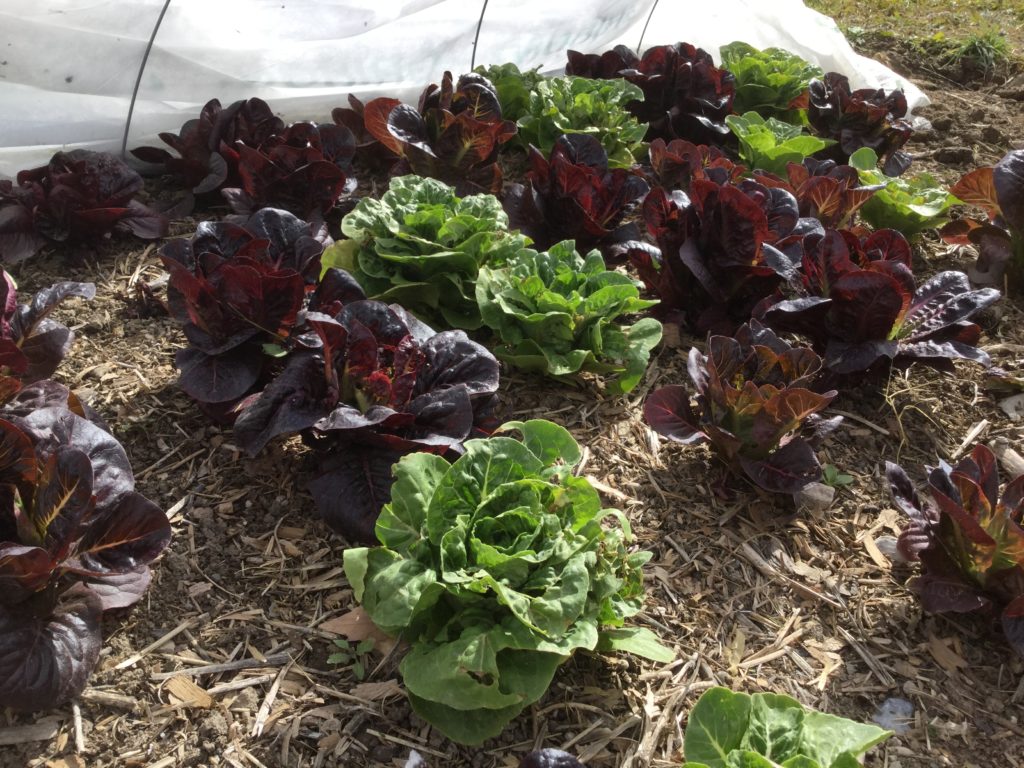 I wondered if I could plant a very late crop and be successful into October. At the end of August I planted seeds into soil blocks and tended and waited. after about two and a half weeks they were set out in the garden. They did beautifully. I was so excited watching them, anticipating sweet little heads of lettuce those last few weeks at market. We even successfully held them over through a hard freeze that took out the rest of the garden, by erecting temporarily tunnels covered with floating row cover and a thick blanket during the nights.
I wondered if I could plant a very late crop and be successful into October. At the end of August I planted seeds into soil blocks and tended and waited. after about two and a half weeks they were set out in the garden. They did beautifully. I was so excited watching them, anticipating sweet little heads of lettuce those last few weeks at market. We even successfully held them over through a hard freeze that took out the rest of the garden, by erecting temporarily tunnels covered with floating row cover and a thick blanket during the nights.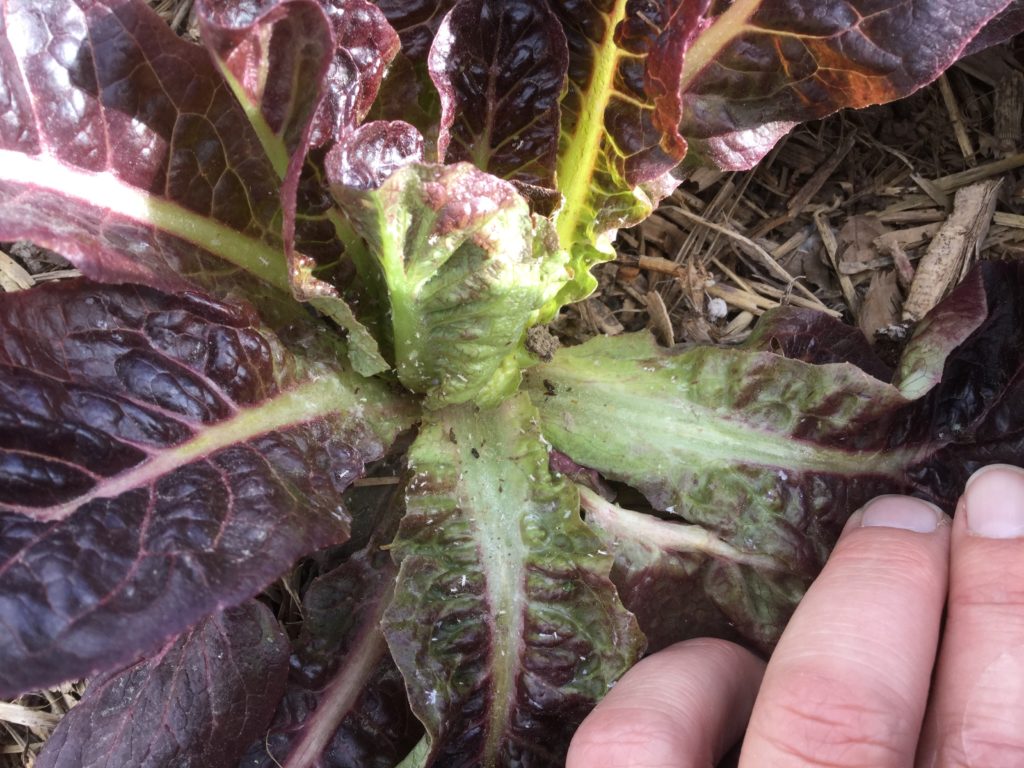 My beautiful crop of specialty romaine lettuce was a complete loss. While they will feed the rabbits and chickens, which in turn will feed the soil, I wanted them for market, and they are not fit to sell at market.
My beautiful crop of specialty romaine lettuce was a complete loss. While they will feed the rabbits and chickens, which in turn will feed the soil, I wanted them for market, and they are not fit to sell at market.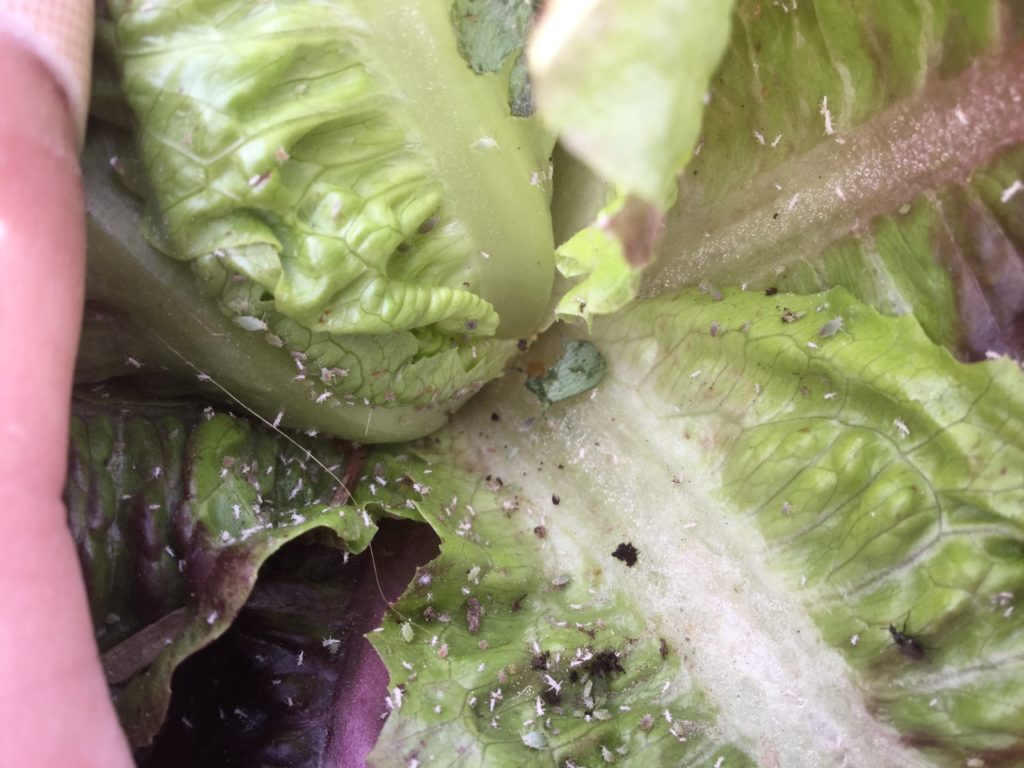
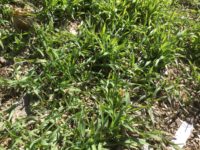
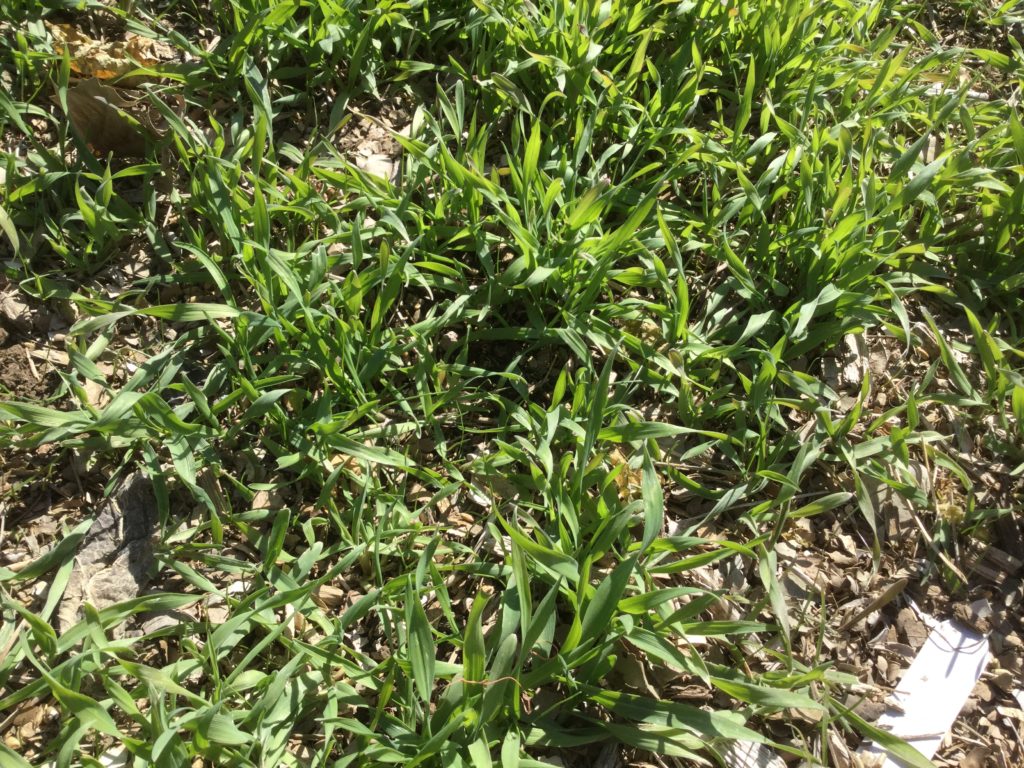
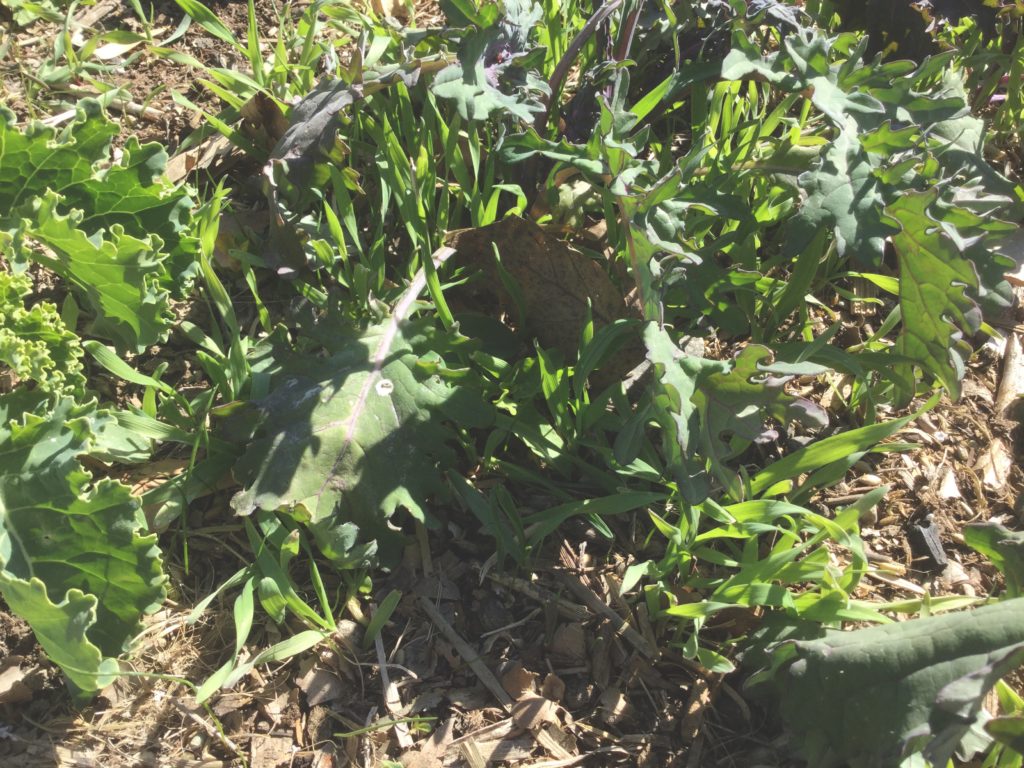 So what do I do in the spring when it comes to planting time with beds full of rye? It’s actually pretty simple. The rye gets mowed before it goes to seed. I used an annual rye grass, meaning it only lives one season. This next spring when we are ready to prepare the beds for planting the rye will be mowed down low and lightly turned in to the soil. This will add a lot of organic matter and create humus in the soil.
So what do I do in the spring when it comes to planting time with beds full of rye? It’s actually pretty simple. The rye gets mowed before it goes to seed. I used an annual rye grass, meaning it only lives one season. This next spring when we are ready to prepare the beds for planting the rye will be mowed down low and lightly turned in to the soil. This will add a lot of organic matter and create humus in the soil.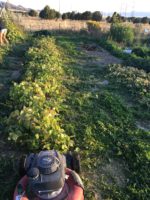
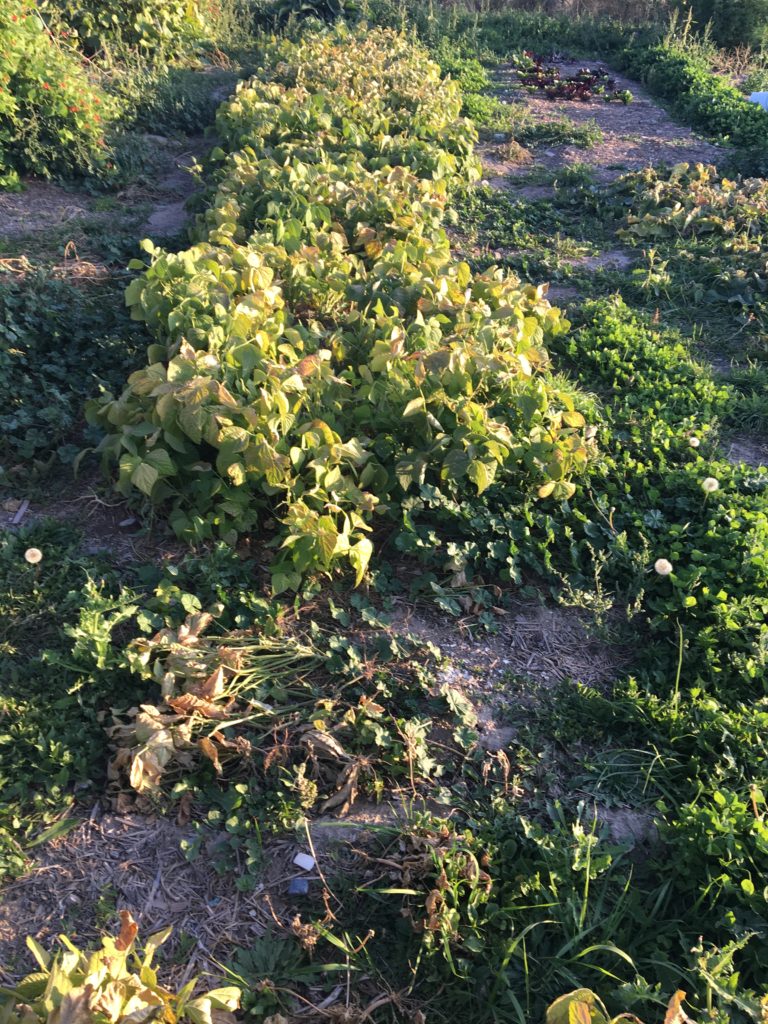
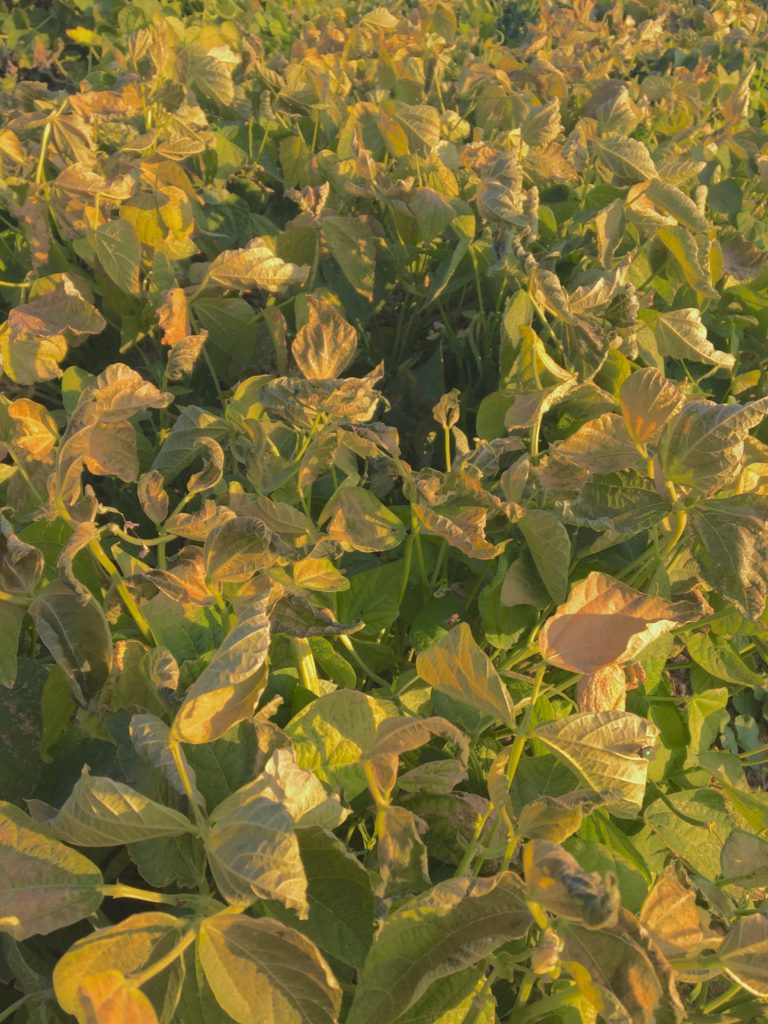
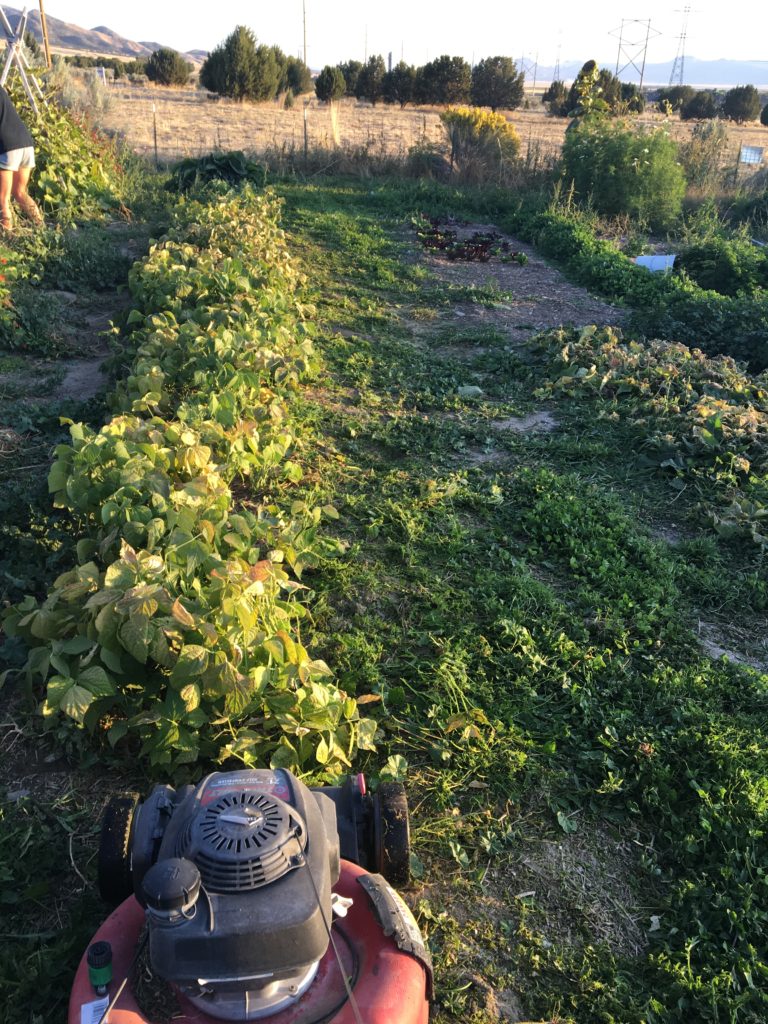
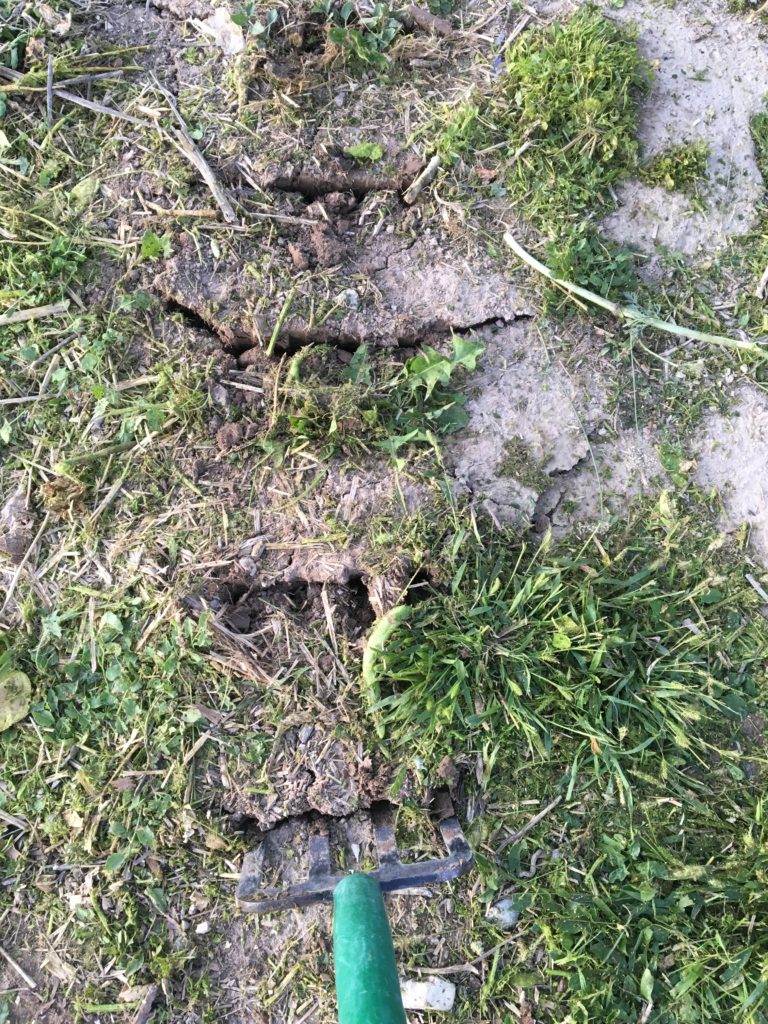
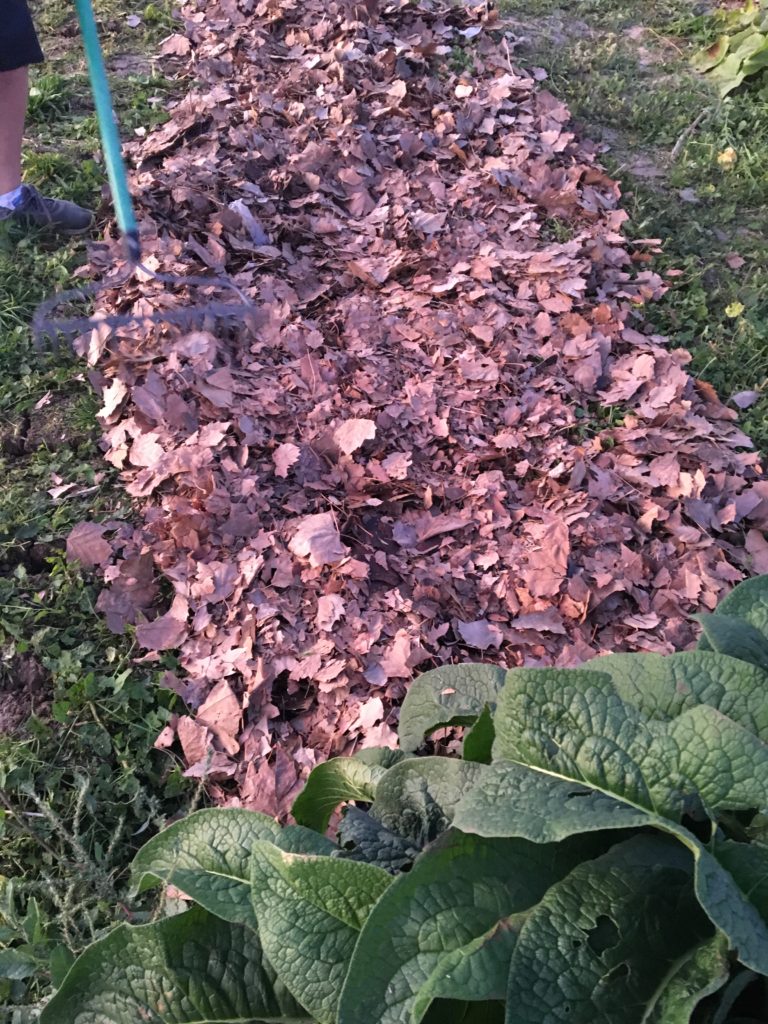
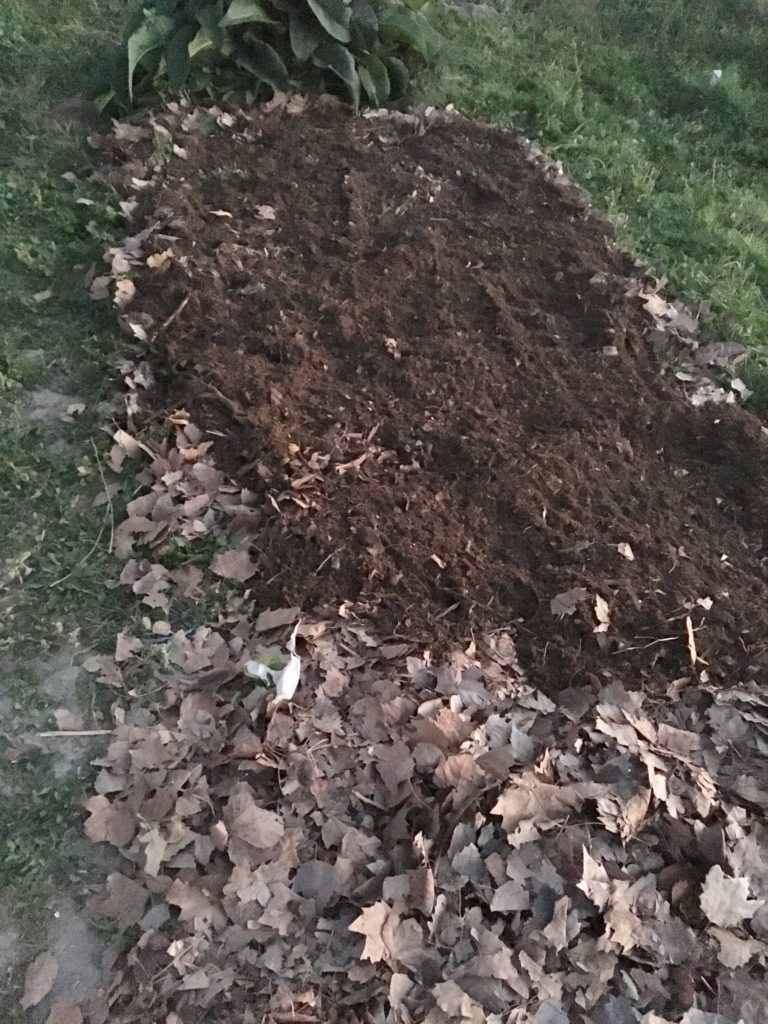
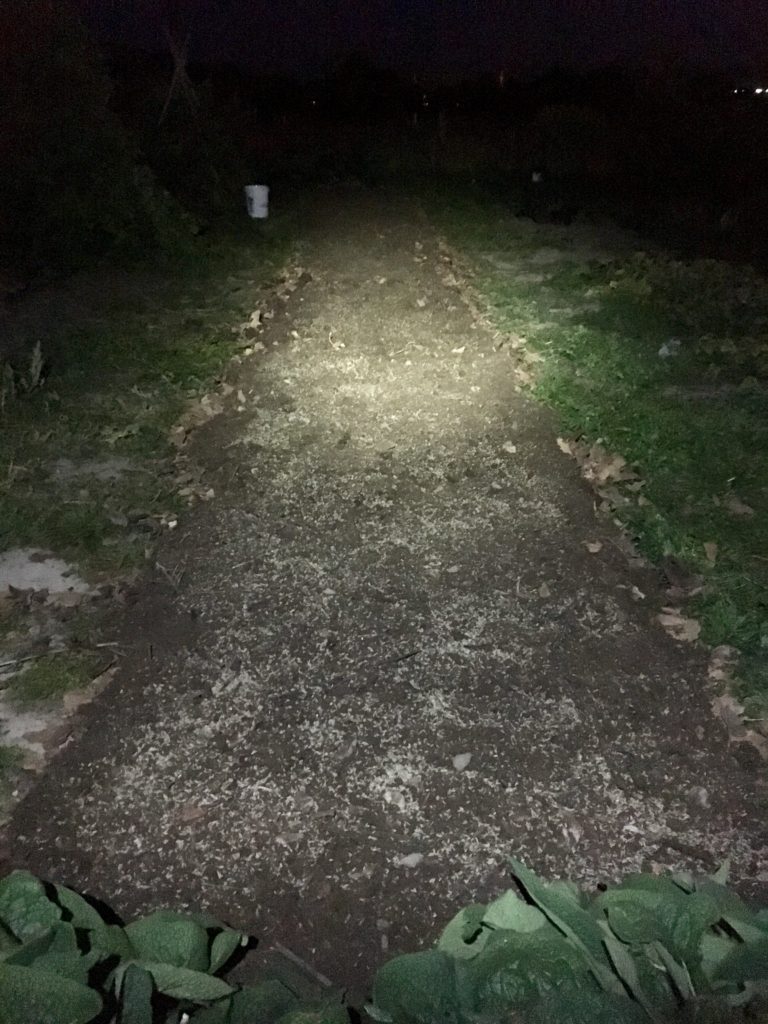
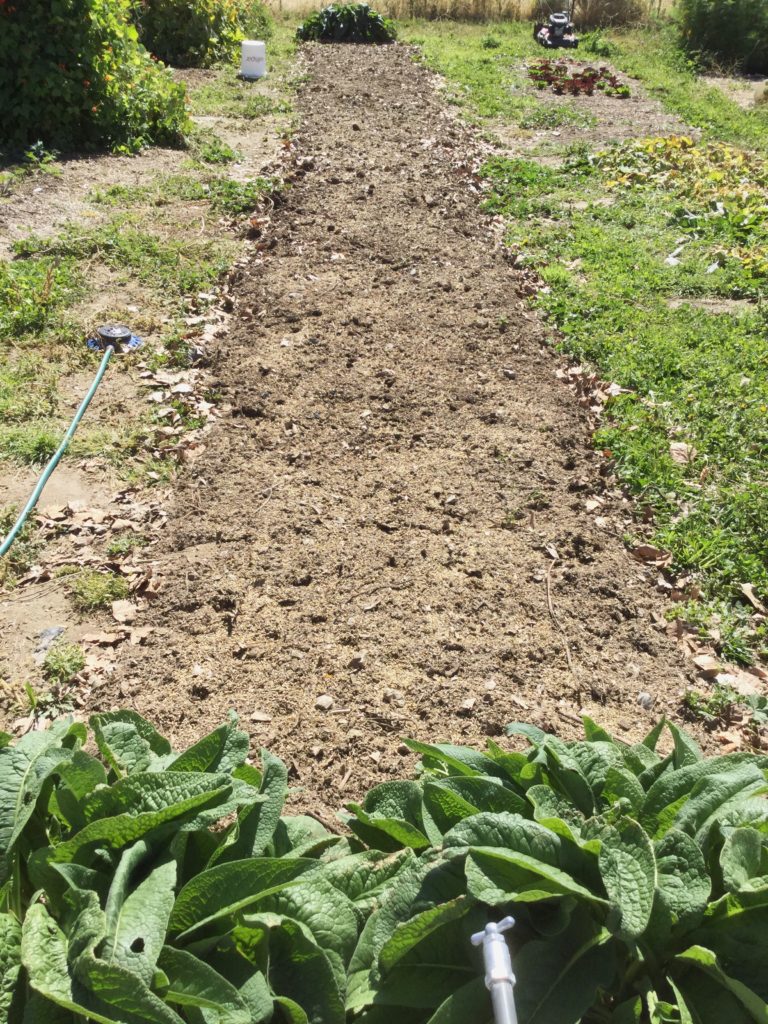

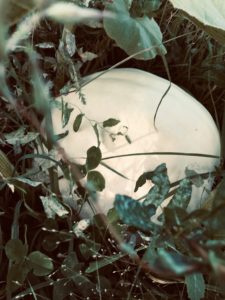 Autumn is one of my most favorite times of the year. I most likely say that at the beginning of every new season, I am glad to live in an area of the world where I get to have four seasons, I like the variety and anticipation that each season brings. That being said, Autumn is one of my favorites, I don’t tire of it quickly and I love the cool nights, the harvest, the fall colors, snuggling in front of the first fire of the season. Its such a lovely time of year. I must confess another reason I love autumn is my love affair with pumpkins. Seriously they are the mostly beautiful and interesting of all vegetables. I love the typical jack-o-lantern style and I love the old heirloom varieties, the kind that people have been growing in France for five hundred years. I love them all. I have to restrain myself every spring as I plan and plant my garden so I don’t plant too many. I so enjoy pumpkins.
Autumn is one of my most favorite times of the year. I most likely say that at the beginning of every new season, I am glad to live in an area of the world where I get to have four seasons, I like the variety and anticipation that each season brings. That being said, Autumn is one of my favorites, I don’t tire of it quickly and I love the cool nights, the harvest, the fall colors, snuggling in front of the first fire of the season. Its such a lovely time of year. I must confess another reason I love autumn is my love affair with pumpkins. Seriously they are the mostly beautiful and interesting of all vegetables. I love the typical jack-o-lantern style and I love the old heirloom varieties, the kind that people have been growing in France for five hundred years. I love them all. I have to restrain myself every spring as I plan and plant my garden so I don’t plant too many. I so enjoy pumpkins.